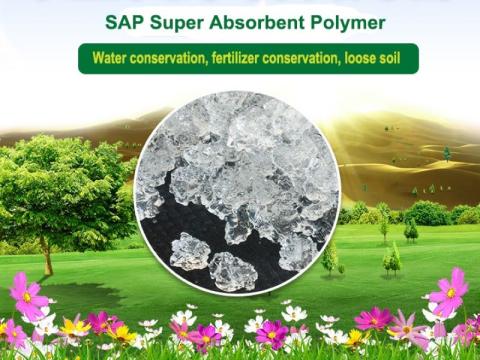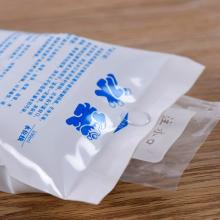Agricultural water retention agent, also known as water-absorbing resin for agriculture or polymer water-absorbing material, is a new type of polymer product. It has a strong ability to absorb and store water as well as slowly release water, playing an important role in the field of soil improvement and water-saving irrigation. When contacted with water, agroforestry water retaining agent can quickly absorb and store a large amount of pure water, its water absorption rate is usually as high as hundreds or even thousands of times its own volume, and then gradually release the absorbed water under drought conditions, supplying plant roots to absorb and utilize the water, and effectively alleviating the impact of soil dryness on plant growth.
Features
- Highly efficient water absorption and water retention: agricultural water retention agent can quickly absorb rainwater, irrigation water and other water, and keep the water from evaporating or seeping down too fast for a long period of time, which can significantly increase the water content of the soil.
- Slow-release function: according to the change of soil humidity, water retention agent can store water in wet environment, and slowly release water in drought, to meet the water demand of plants in different growth periods.
- Reusability: Due to its special chemical structure, water retention agent can withstand many cycles of water absorption and release and has a long service life.
- Improvement of soil structure: water retention agent in the soil not only plays the role of water replenishment, but also can improve soil aeration and porosity, promote microbial activity, help nutrient decomposition, and plant absorption.
- Good compatibility: when mixed with fertilizers, pesticides, etc., no adverse reaction will occur, and it even helps to reduce the loss of nutrients and improve the utilization rate of fertilizer efficiency.
Applications
- Modern agricultural production: It is widely used in farmland crop cultivation, especially in arid areas and water-scarce seasons, by adding water retention agent to increase the water storage capacity of the soil, reduce the number of irrigation times, lower the cost of agricultural production, and realize the goal of saving water and increasing production.
- Forestry Nursery and Afforestation: In the process of seedling transplantation and afforestation, water retaining agent mixed with soil is used in planting holes, which can effectively protect the root system of seedlings from drought and improve the survival rate of afforestation.
- Gardening and Landscape Construction: In urban greening and garden landscape design, the application of water retaining agents can enhance the drought-resistant ability of plants, reduce the difficulty of maintenance, and ensure the healthy growth of plants.
- Desertification management and ecological restoration: in decertified land transformation projects, water retention agents play a positive role in improving soil moisture retention and restoring vegetation ecosystems.



